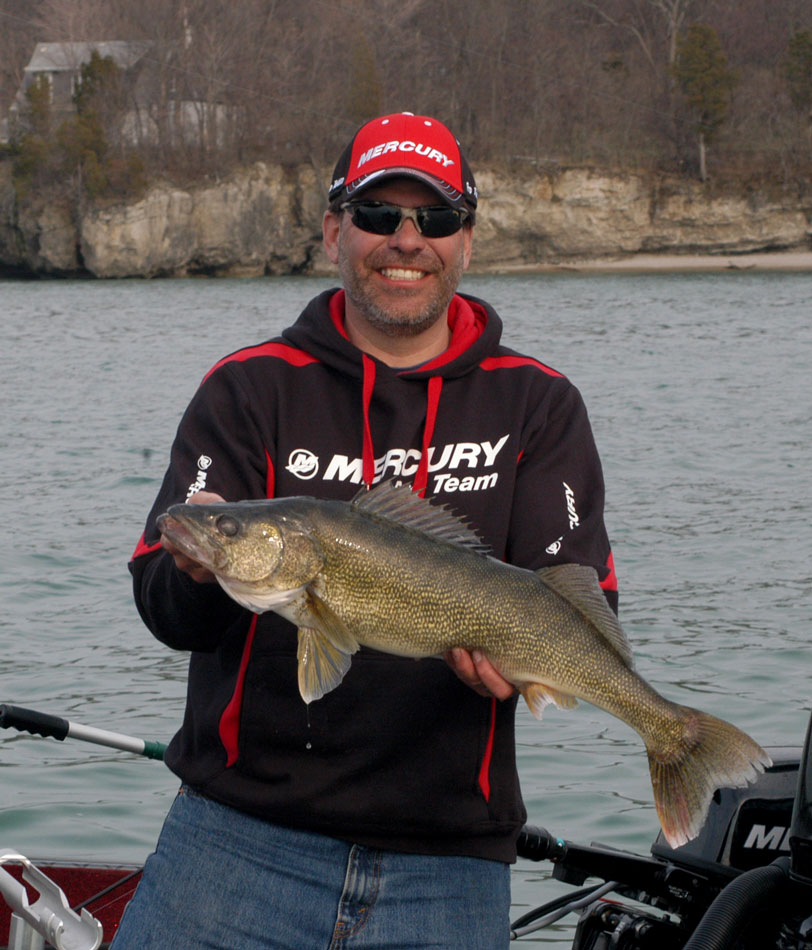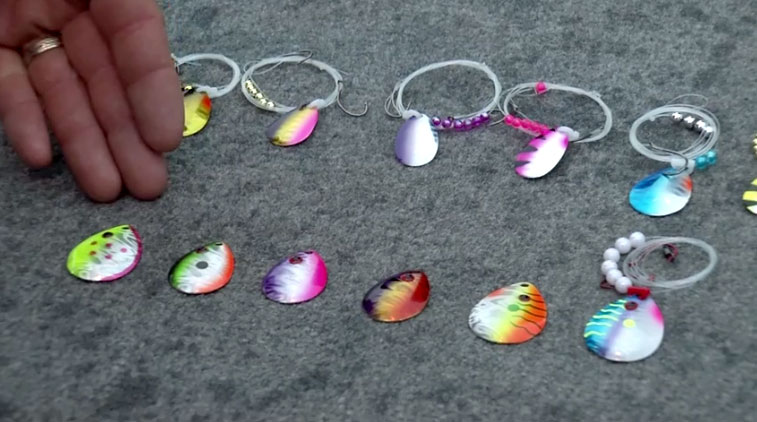 The heat and sun can play funny games with an angler’s attitude this time of year. Especially on “those days”; when it’s hot and muggy and there’s barely any breeze to shoo the bugs away. No doubt, when you hit the water in the morning, you were excited and full of anticipation of the bites to come, but by mid-afternoon, as you bake under a cloudless sky, you begin to wonder why you aren’t getting bites. You caught walleyes here last year at this time – lots of them! You even double check the fish finder to make sure it didn’t accidentally get put into “simulation” mode, because not one of the hundreds of hooks moving across the screen is making any kind of attempt at hitting your crankbaits.
The heat and sun can play funny games with an angler’s attitude this time of year. Especially on “those days”; when it’s hot and muggy and there’s barely any breeze to shoo the bugs away. No doubt, when you hit the water in the morning, you were excited and full of anticipation of the bites to come, but by mid-afternoon, as you bake under a cloudless sky, you begin to wonder why you aren’t getting bites. You caught walleyes here last year at this time – lots of them! You even double check the fish finder to make sure it didn’t accidentally get put into “simulation” mode, because not one of the hundreds of hooks moving across the screen is making any kind of attempt at hitting your crankbaits.
Logic and experience may be telling you that the warm water and conditions would make these fish “active” and willing to chase down fast moving, high action crankbaits like they have done so in the past. However, that pattern is not panning out; your “high action crankbait” which simply slayed them last year is being ignored. Face it, its time to put a new “spin” on your summer walleye pattern!
The problem is most likely something you didn’t anticipate. In most cases when this happens it’s because there has been an outstanding hatch of insects or baitfish and those walleyes suspending beneath the boat have been feeding high-on-the-hog for the past few days. They’re full and not in the mood to dash after your crankbait. You’ve got to give them a little dessert. A spinner trailing a juicy nightcrawler can make a splendid final course for an over-stuffed walleye.
Several key factors make spinners and crawlers the best bet when nothing else works on suspended — or bottom-hugging — dog day walleyes. First, a spinner is presented more slowly than a crankbait this time of year — the fish don’t have to work very hard to get it. Second, that tempting nightcrawler is enough to make a walleye’s mouth water — it wiggles and smells good. Third, the spinner “sounds” like a struggling baitfish to a walleye’s lateral line. And finally, the flash of a spinner will attract any active fish in the area to it, so even though you troll more slowly and cover less water, the strike attraction zone of the spinner is probably greater than with a faster moving crankbait. In other words, the fish can see this slow-moving, flashy thing from a long ways away and since it is going slowly, they will swim a fairly long way to investigate.
The dog day walleye scenario takes place to some extent anywhere you find walleyes and baitfish or other food, such as insect larvae that are not relating to structure. Although it is most common to pursue these “middle-of-nowhere” fish in Great Lakes-type fisheries like the Bays de Noc (Lake Michigan), Saginaw Bay (Lake Huron) or Lake Erie’s Central Basin, the fish can also be found in waters like Lake Winnebago in Wisconsin, the Missouri River reservoirs in the Dakotas and Montana, as well as many smaller lakes scattered across the “walleye belt”.
No one spinner type works best in all of these different waters. You have to match spinner size to the size of fish that dominates the lake. If a big fish in your lake is three pounds, then go with about a size #3 spinner. If you’re fishing water where six and eight pound walleyes are common, go up to a bigger #5 sized blade. We’ve found that the Colorado Blades tend to be our favorite as they spin easier at slower speeds and give off a great fish-attracting “thumping” vibration in the water. As for colors, the general rule is that the silver and gold metallics work best in clear water, while cloudier water calls for bright colors like chartreuses and oranges. But those are just general rules-of-thumb. Don’t hesitate to experiment. There are new color combinations coming out all the time – and it’s been proven time and time again … walleyes don’t like following rules. We have been using the new Berkley Flicker Rig spinners that past couple seasons and find that the ease of rigging with pre-tied spinners saves valuable fishing time. And the color array of the Flicker Rig blades is really cool, combining metallic and color with an “oily” finish that looks alive in water. The Flicker Rigs come in a variety of hook and blade sizes and configurations to match the fishing situation you’re in. They also come tied with either Trilene XT or Trilene 100% Fluorocarbon.
 Taking the spinner and bait to the fish depends on where in the water column they are. A very effective and efficient weighting system for trolling open water spinners is the use of the Off-Shore Tackle OR20 Pro Weights System. Utilizing Off Shore Tackle Snap Weight Clips on the Pro Guppy Weights creates a Snap Weight that’s’ very versatile and easy to use. Clip one of these to the line 50 feet in front of the spinner, let out another 50 feet of line. By varying the weight (1/2 once to 3 ounces), you can vary your depth. Another weighting system we have had good success with is the use of in-line weights like the Bass Pro Shops XPS Keel Weights. These particular weights feature holographic finishes and a shape that closely resembles a small baitfish. That gives these weights the ability to not only take your lure down in the water column, but also acts as a great fish attractor. Which weight system is more effective? Both are … sometimes the spinners pulled behind Snap Weights get more bites, sometimes it’s the ones on the inline weights. Again, it may take a little experimentation to determine what’s going to work best on a given day.
Taking the spinner and bait to the fish depends on where in the water column they are. A very effective and efficient weighting system for trolling open water spinners is the use of the Off-Shore Tackle OR20 Pro Weights System. Utilizing Off Shore Tackle Snap Weight Clips on the Pro Guppy Weights creates a Snap Weight that’s’ very versatile and easy to use. Clip one of these to the line 50 feet in front of the spinner, let out another 50 feet of line. By varying the weight (1/2 once to 3 ounces), you can vary your depth. Another weighting system we have had good success with is the use of in-line weights like the Bass Pro Shops XPS Keel Weights. These particular weights feature holographic finishes and a shape that closely resembles a small baitfish. That gives these weights the ability to not only take your lure down in the water column, but also acts as a great fish attractor. Which weight system is more effective? Both are … sometimes the spinners pulled behind Snap Weights get more bites, sometimes it’s the ones on the inline weights. Again, it may take a little experimentation to determine what’s going to work best on a given day.
Using Off-Shore Tackle OR-12 or OR-31 Side Planer in-line boards takes the spinners out to the side of the boat and increases the amount of water you can cover. By putting lighter weights on the outside and heavier weights inside, you can probe different depths until you find the set-up that catches fish.
This summer, trolling for dog day walleyes will be a lot less frustrating if you give them a slow-moving spinner with a tasty nightcrawler. It’s a combination that sure to help you get your Next Bite!










